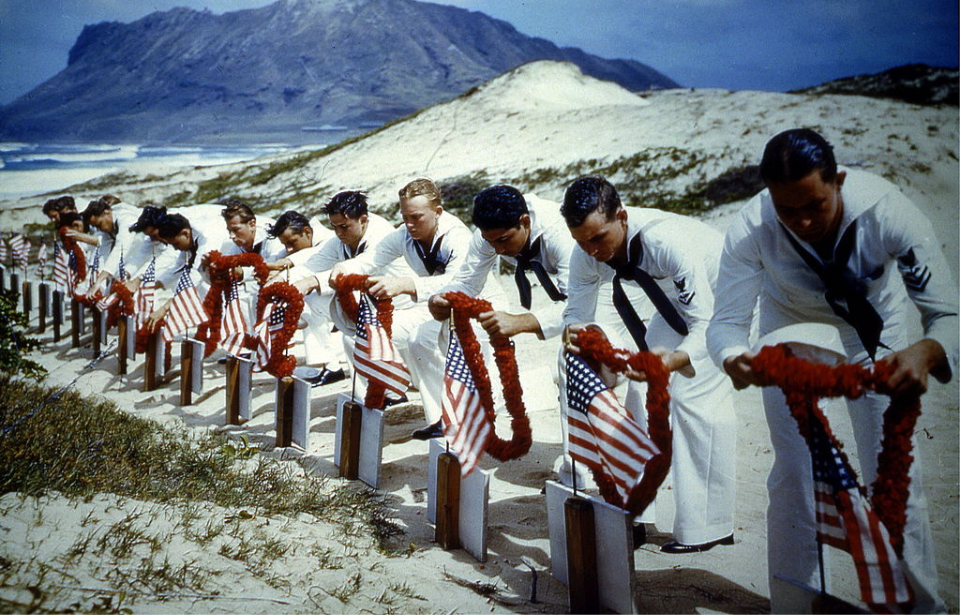In the early hours of December 7, 1941, Japan launched its devastating attack on Pearl Harbor, driven by the goal of preventing the United States from hindering its military expansion into Southeast Asia. The plan sought to obliterate the nation’s military aircraft, naval vessels and equipment.
Shortly before 8:00 AM, a multitude of fighter aircraft and bombers soared into the skies, constituting the initial wave of the attack. Caught off guard, the American forces saw widespread devastation as aircraft and submarines pounded naval base facilities. The outcome was the loss of over 2,400 lives, with 2,335 being servicemen. More than 300 aircraft suffered damage, and the majority of stationed vessels endured either severe damage or complete destruction.
The day following the attack, the United States, previously maintaining a stance of neutrality, formally entered the Second World War. Below, you will find a compilation of rare photographs capturing moments before, during and after the assault.
Japanese bombs caused fuel tanks to rupture
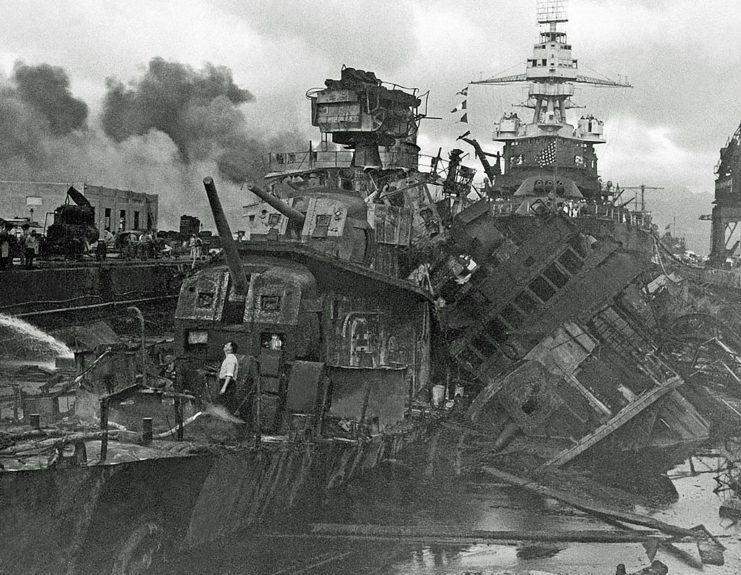
It wasn’t just battleships that bore the brunt of the attack on Pearl Harbor. This photo illustrates the extensive damage inflicted upon the USS Downes (DD-375) and Cassin (DD-372), two destroyers that were undergoing maintenance in drydock at the base. A 550-pound bomb strike on Downes resulted in ruptured fuel tanks, setting off large fires on both vessels.
Downing Japanese aircraft
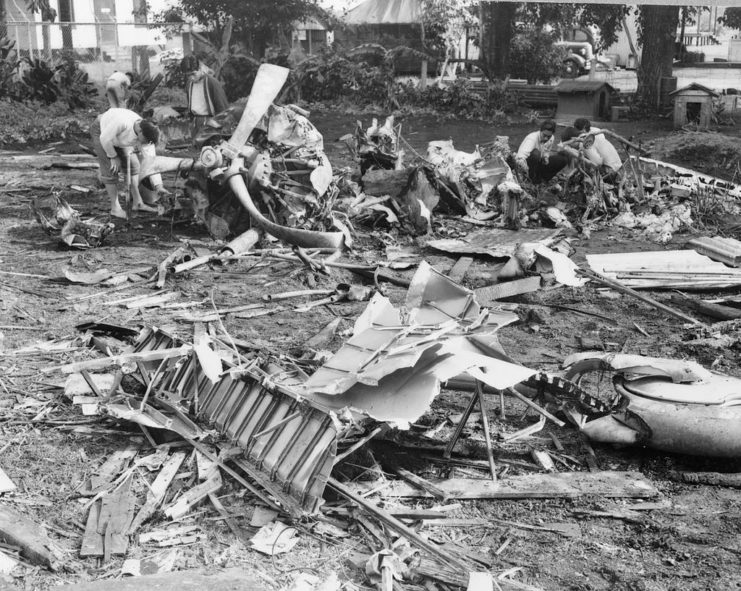
The wreckage of a Japanese bomber lies amid the aftermath at Pearl Harbor. Despite the element of surprise in the attack, the American forces stationed on Ford Island managed to mount a resilient defense against the enemy pilots and naval personnel.
Declaring war on Japan
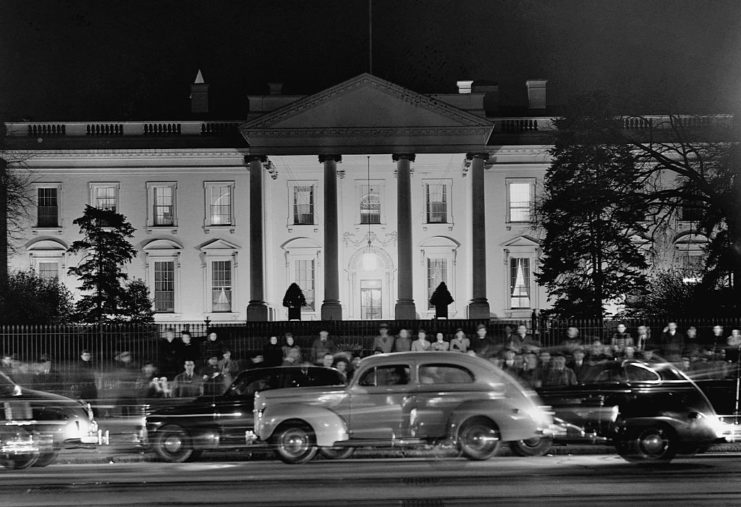
Widespread and catastrophic damage
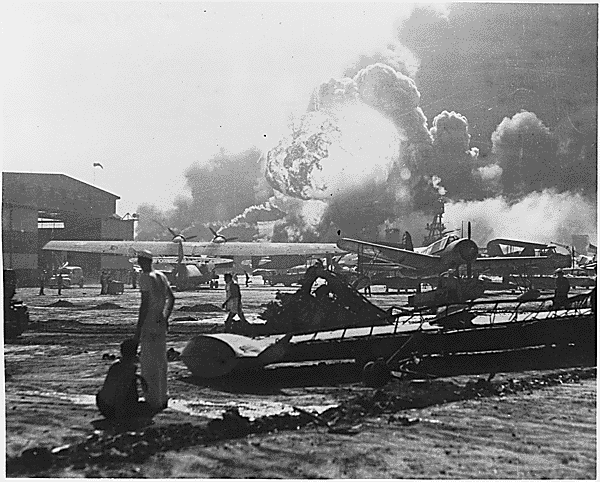
Amid the wreckage caused by the attack, US Navy personnel stand among damaged aircraft and equipment. In the background, smoke and flames rise into the air, marking the aftermath of the assault on battleships targeted by Japanese aircraft.
Civilians were caught in the crossfire
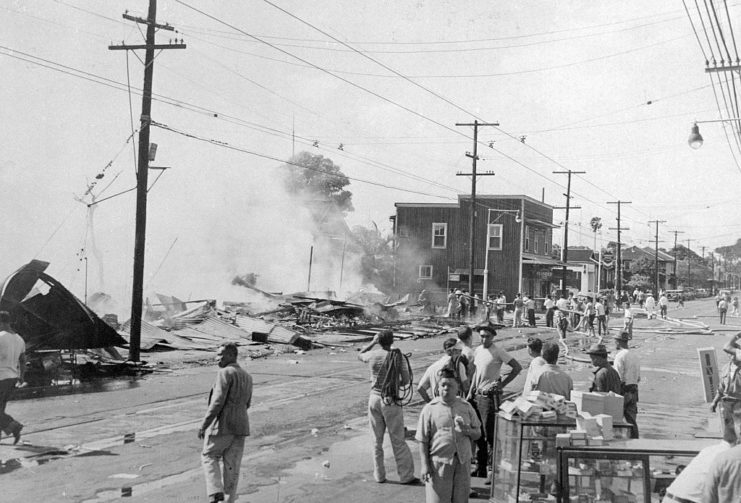
Honolulu endured damage in the attack, as residents sought shelter from both Japanese bombs and American anti-aircraft fire that rained down on the city. This photo offers a glimpse of the destruction caused.
Tragically, 68 civilians lost their lives in the bombardment, becoming innocent victims of the military action.
Extensive planning went into the attack on Pearl Harbor
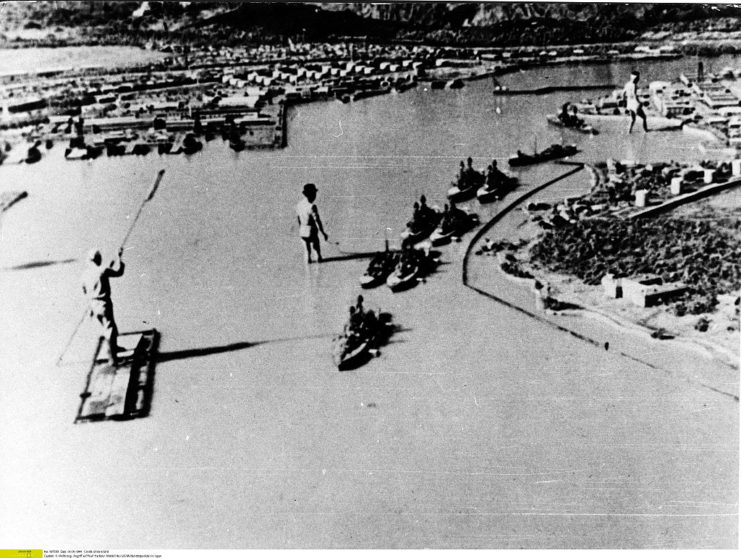
For the strategic preparation of the Pearl Harbor attack, the Japanese military constructed an expansive replica of the American naval base. This image showcases the comprehensive nature of the mock-up, featuring accurately modeled battleships anchored offshore.
The attack on Pearl Harbor was front page news
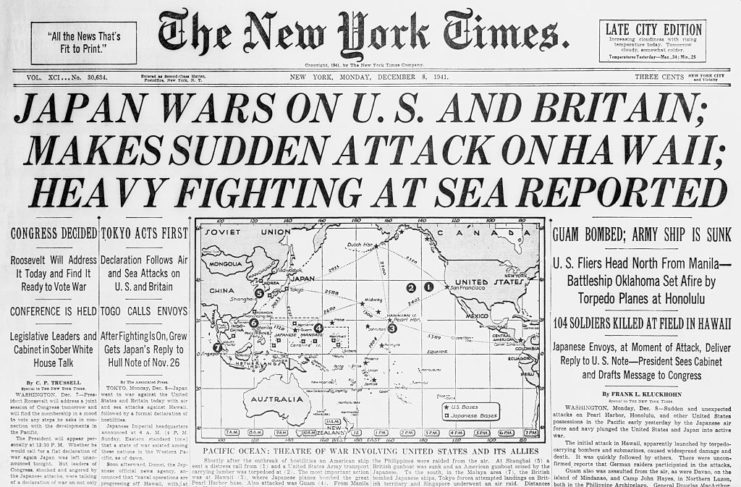
Front page of The New York Times following the attack on Pearl Harbor, dated December 8, 1941. The headline reads, “JAPAN WARS ON U.S. AND BRITAIN; MAKES SUDDEN ATTACK ON HAWAII; HEAVY FIGHTING AT SEA REPORTED.”
Attacking from the air and sea
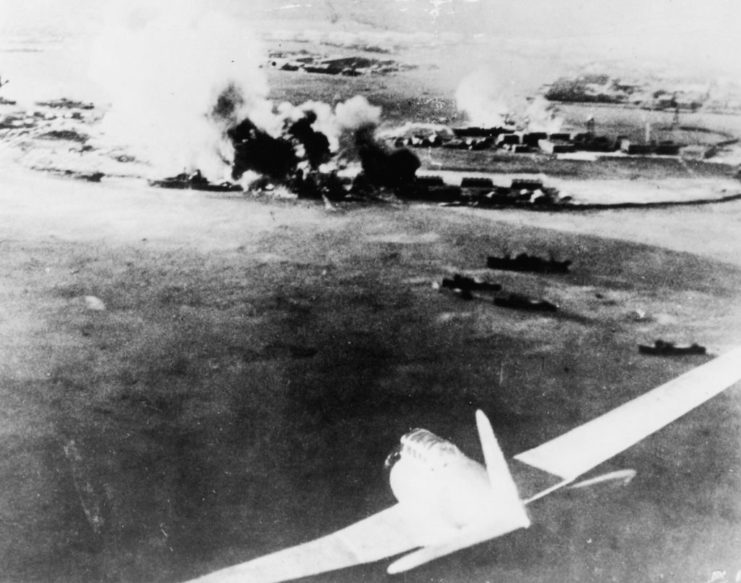
Captured by a Japanese pilot, this photograph shows aircraft heading toward Pearl Harbor. The bomber depicted is laden with explosives, destined to be released by its pilot to target sea vessels and other aircraft during the assault on the naval base.
A carefully planned salvage effort followed
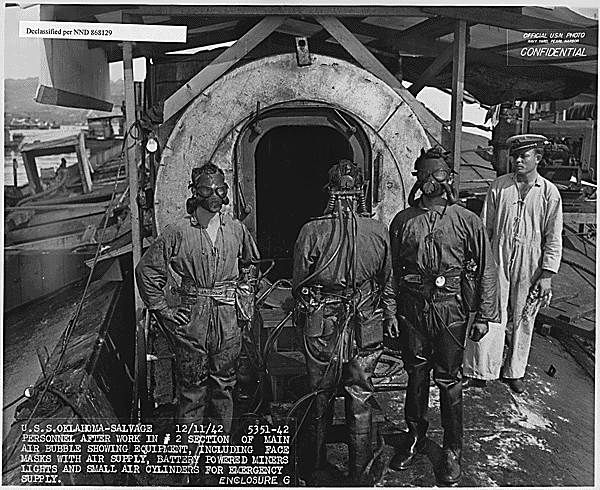
US Navy personnel working on the salvage effort of the USS Oklahoma (BB-39). It was later determined the battleship had suffered too much damaged to be repaired and she was sold for scrap following the removal of her armaments. In 2015, the Pentagon began the USS Oklahoma Project, dedicated to identifying the unknowns who’d lost their lives on the vessel. The program ended in 2021, on the 80th anniversary of the attack on Pearl Harbor.
Preparing to launch the attack on Pearl Harbor
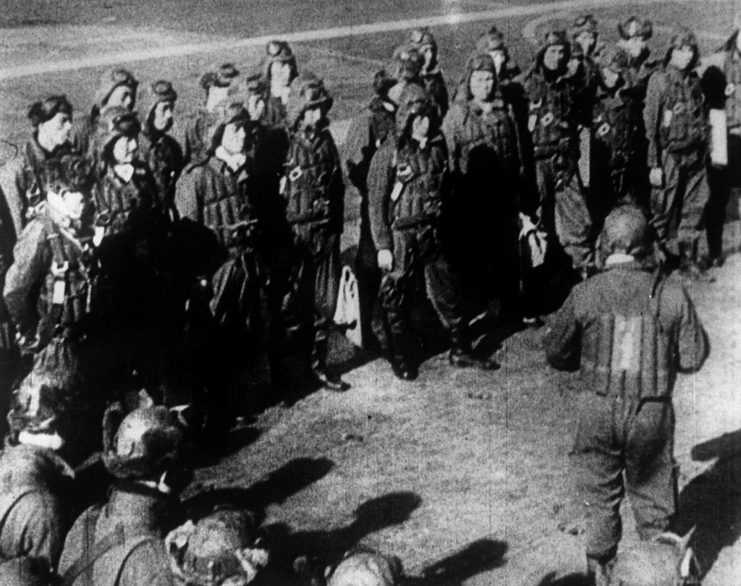
Japanese pilots receiving their instructions just prior to the start of the attack on Pearl Harbor. Aboard an aircraft carrier, they subsequently took off in their aircraft and made their way to the American naval base.
Capture of Japanese vessels
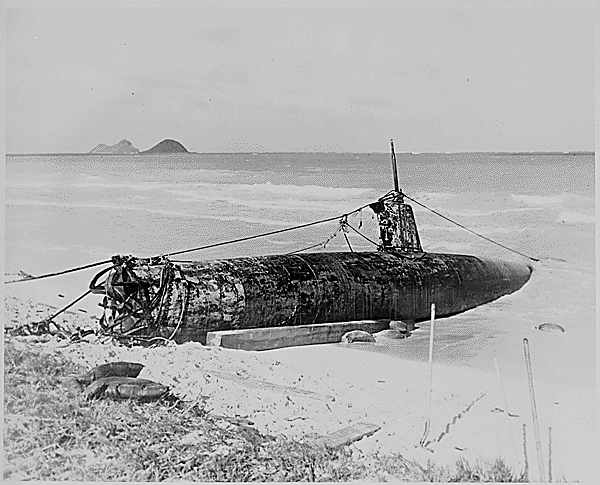
Japanese submarine beached at Bellows Field. While the enemy forces concentrated their attack on the larger American airfields around Pearl Harbor, smaller ones also suffered damaged, albeit on a smaller scale. Six people were wounded and two were killed at Bellows Field.
Aircraft carriers were key to launching the attack on Pearl Harbor
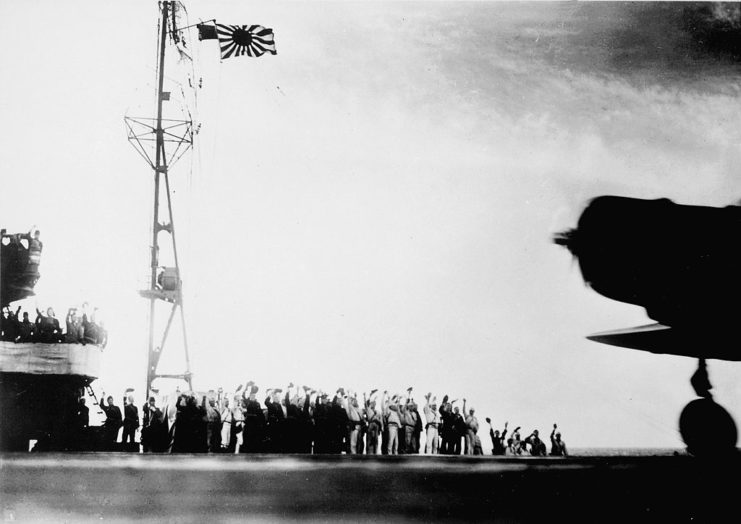
The Imperial Japanese Navy (IJN) launched a number of Nakajima B5N2 torpedo bombers from the aircraft carrier Shōkaku during their attack on Pearl Harbor. Following the assault, the vessel participated in a number of naval battles in the Pacific Theater, and was ultimately sunk by the USS Cavalla (SS-244) during the Battle of the Philippine Sea.
Extensive damage was caused to the naval base
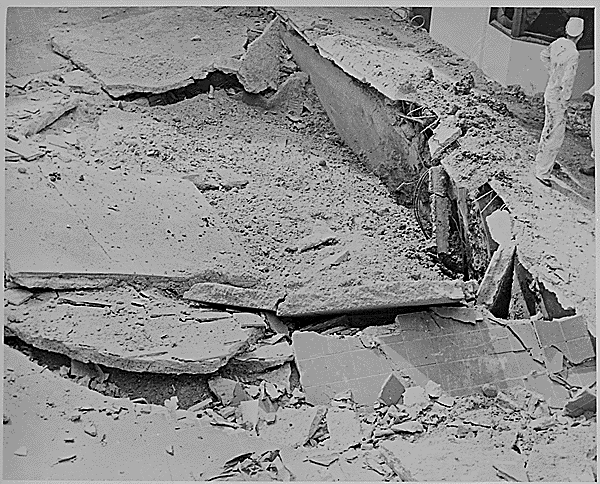
A number of bombs dropped by the Japanese during the attack on Pearl Harbor didn’t land on their intended targets. Falling a number of feet from buildings, equipment and vehicles, they left large craters in the ground, leaving large holes.
Only a few American aircraft took to the skies
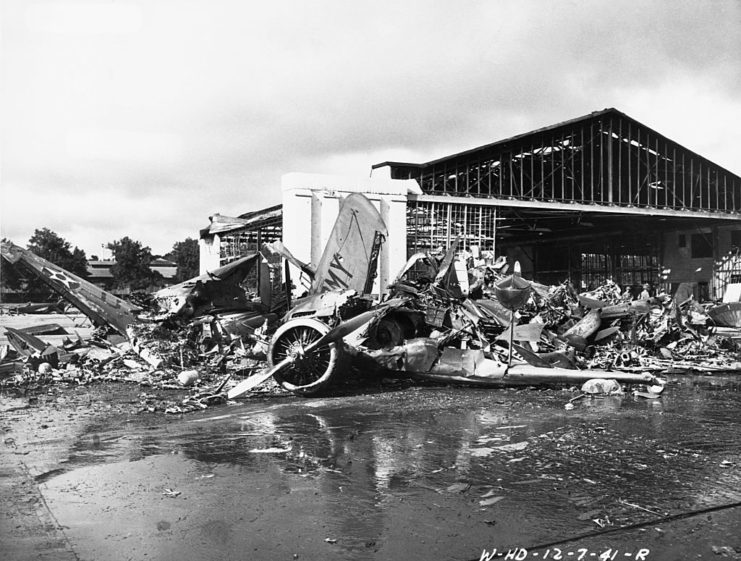
Damaged aircraft at Wheeler Airfield following the attack. The location was the first hit during the bombardment, in an attempt to prevent American aircraft from taking to the air and launching a counterattack against the Japanese. While the majority were destroyed, 12 pilots did start up their Curtiss P-36 Hawks and P-40 Warhawks and engaged the enemy in fierce dogfights.
The USS California (BB-44) suffered severe damage
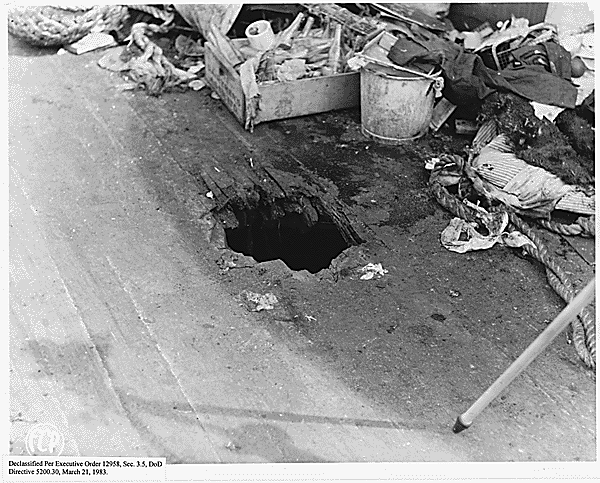
Many of the bombs dropped on the USS California (BB-44) during the attack on Pearl Harbor broke through the battleship’s upper deck, leaving large holes. This photo was taken in 1942, during the US Navy’s salvage operation for the vessels that sunk and/or were heavily damaged during the bombardment.
Over 2,300 American servicemen lost their lives
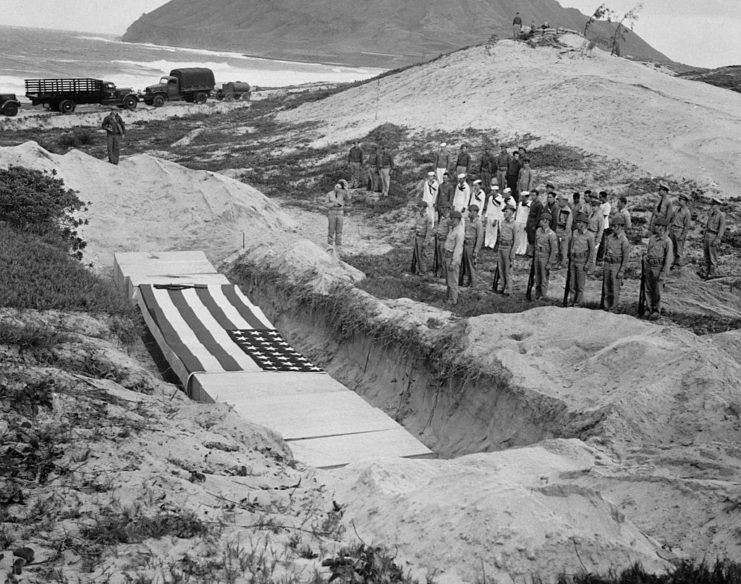
Military personnel paying their respects to some of the servicemen killed during the attack on Pearl Harbor – as aforementioned, 2,335 perished. The caskets are draped in the American flag, as is tradition for military funerals.
The USS Arizona (BB-39) suffered the most casualties
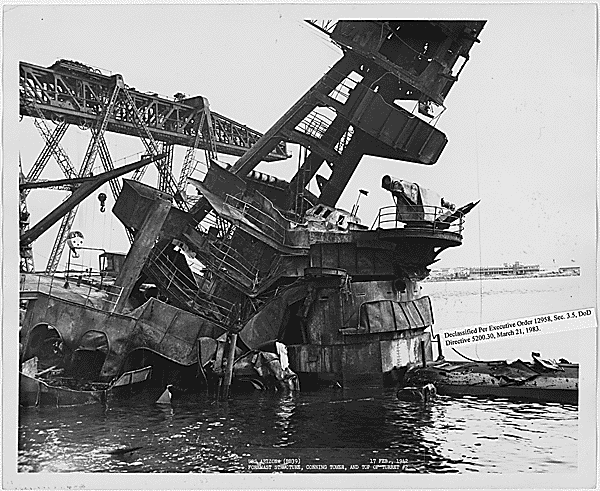
The USS Arizona (BB-39) was one of the battleships to suffer extensive damage. Records show that 1,177 of the vessel’s crewmen perished during the attack on Pearl Harbor, accounting for nearly half of the 2,400 total deaths from that day. This photo features a close-up of the top of Arizona‘s turret, as well as her conning tower and foremost structure.
Taking in the damage
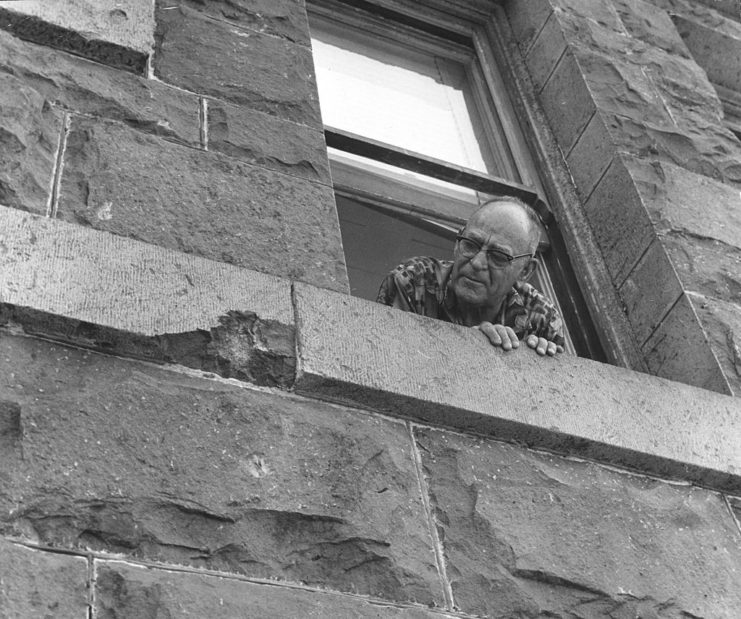
Photo of Dan Pires, the caretaker of Punahou School in Honolulu, examining the damage caused by anti-aircraft fire during the attack. Large chunks of the brick exterior were taken out by the shrapnel.
Hospitals weren’t spared
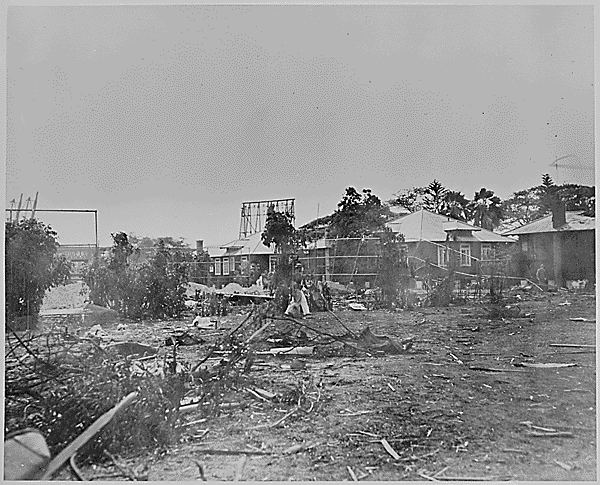
Remains of the Naval Hospital on Ford Island following the attack on Pearl Harbor. This was one of the many buildings struck by Japanese aerial bombs during the air and naval assault.
Signing the declaration of war
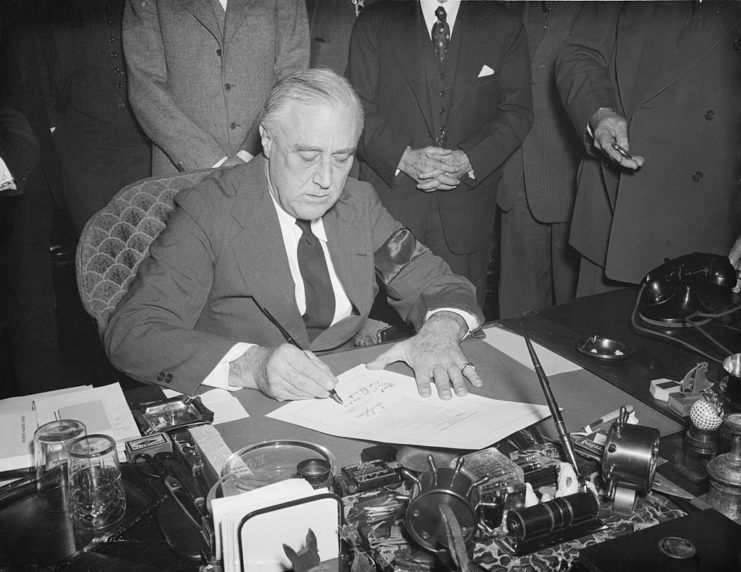
Prior to the attack on Pearl Harbor, the US had remained neutral in the war, albeit supplying the Allies in Europe with equipment and vehicles. Immediately following the bombardment, President Franklin D. Roosevelt signed a declaration of war against Japan, officially bringing America into the conflict.
The USS Oklahoma (BB-37) was almost unrecognizable
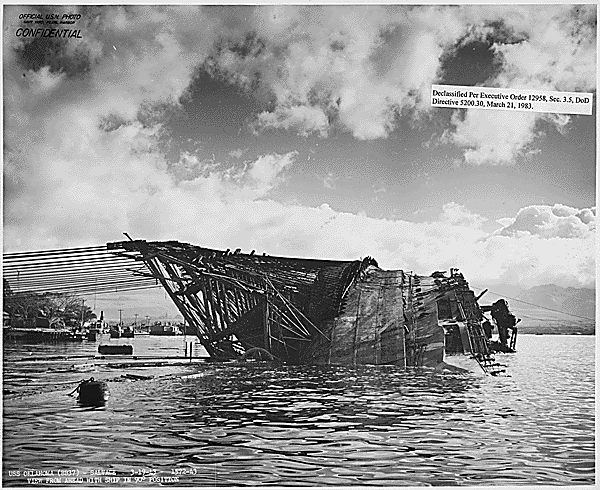
The USS Oklahoma (BB-37) suffered multiple hits from Japanese-manned torpedo bombers, resulting in the deaths of 429 crew members. While some survivors were able to jump into the water to escape, others had to wait to be drilled out of the battleship by rescue crews.
Warnings left unheeded
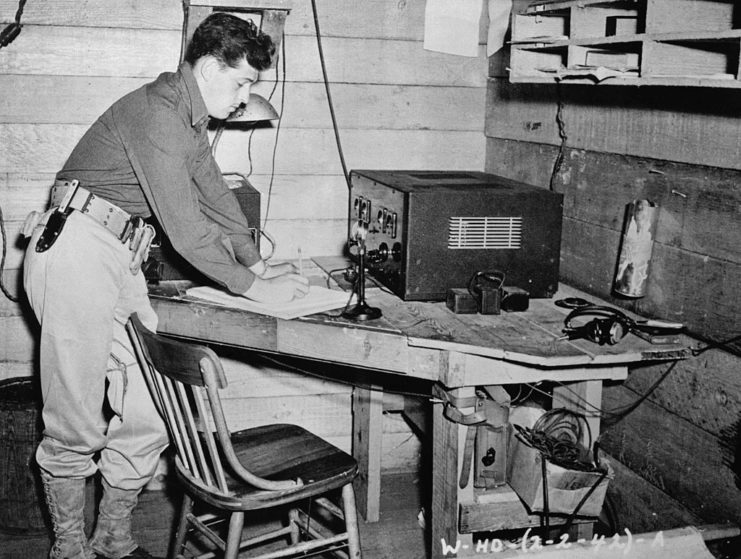
Pvt. Joseph L. Lockard with his radio. The 19-year-old soldier from Williamsport, Pennsylvania was one of two manning the radar station in Oahu when the Japanese launched the first wave of their attack on Pearl Harbor. He informed his superior, who failed to heed his warning, saying the blips on the screen were likely Boeing B-17 Flying Fortresses arriving from California.
Speaking about this later in life, Lockard shared he wasn’t angry about his warning being ignored. “If anything, it made me sad,” he said.
‘THIS IS NO DRILL’
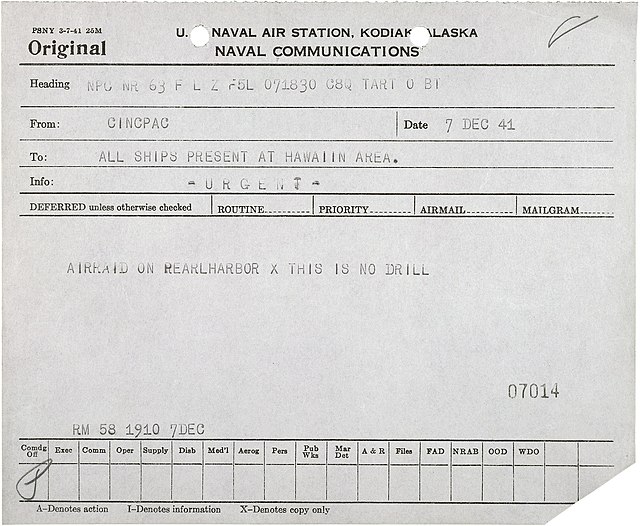
Radiogram announcing the attack on Pearl Harbor on December 7, 1941. Issued by the Commander in Chief Pacific Fleet Headquarters (CINPAC), it reads, “AIRRAID ON PEARLHARBOR X THIS IS NO DRILL.”
The USS Nevada (BB-36) was ‘the only bright spot’
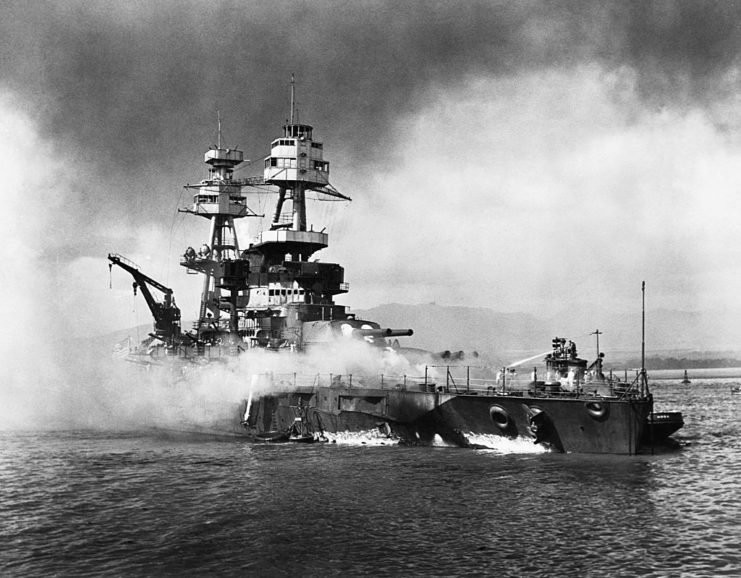
Despite the USS Nevada (BB-36) suffering enough damage to be set aflame (one torpedo and six bomb strikes), she was the only vessel to get underway and try to escape from Battleship Row during the attack on Pearl Harbor. Dubbed “the only bright spot in an otherwise dismal and depressing morning,” she was later repaired and served as a convoy escort throughout the Second World War.
Structural damage was extensive throughout Pearl Harbor
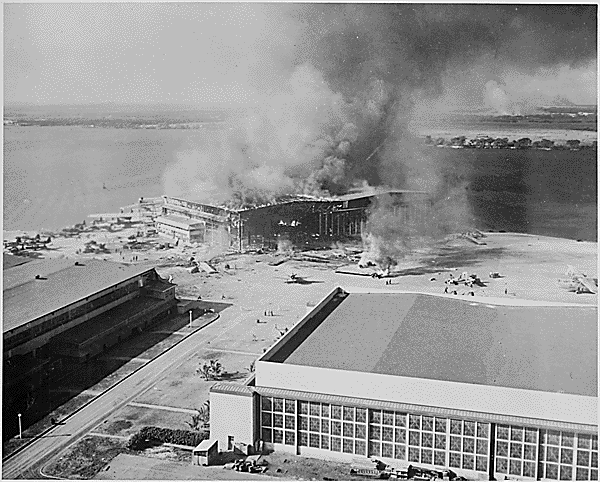
Soldiers’ barracks ablaze on Ford Island following the Japanese attack. Along with the ships anchored at Pearl Harbor’s Battleship Row, a number of structures and American aircraft were targeted in the enemy bombardment.
Cleaning up the naval base was a huge undertaking
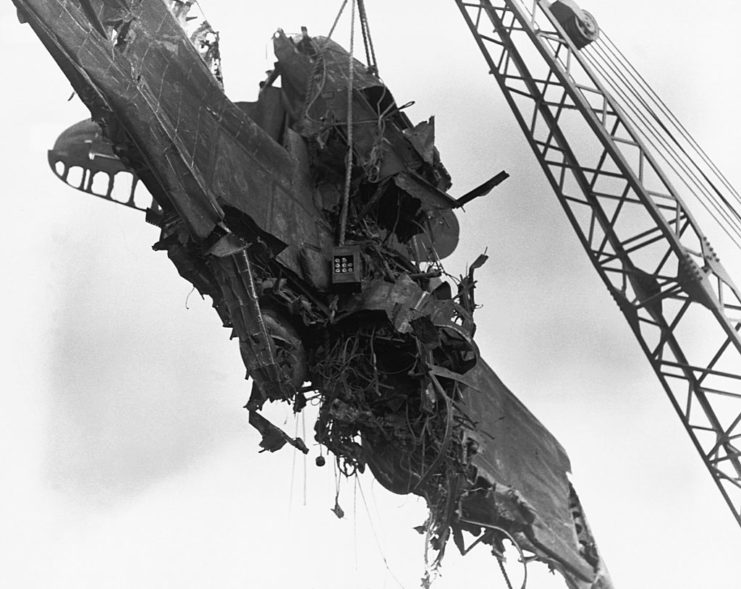
Damaged aircraft being lifted into the sky following the attack on Pearl Harbor. This was one of the many aircraft stationed at the naval base when the Japanese launched their assault.
Oil covered the water surrounding Pearl Harbor
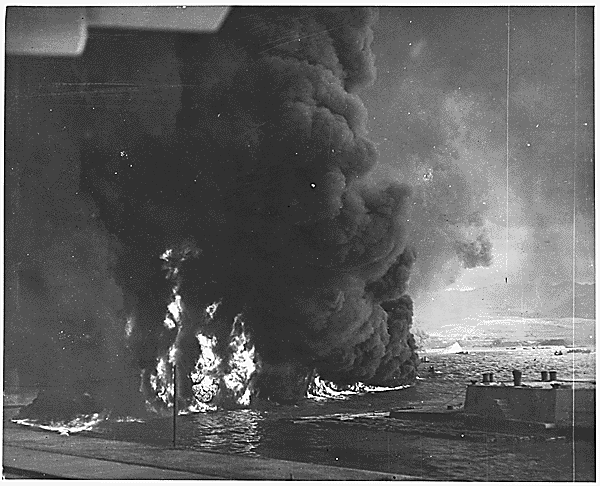
Smoke billowing from oil burning on top of the water around Ford Island. Oil continuously seeped into the ocean from the damaged battleships and was set ablaze by the burning vessels and aerial bombings.
Hickam Field was one of the primary targets
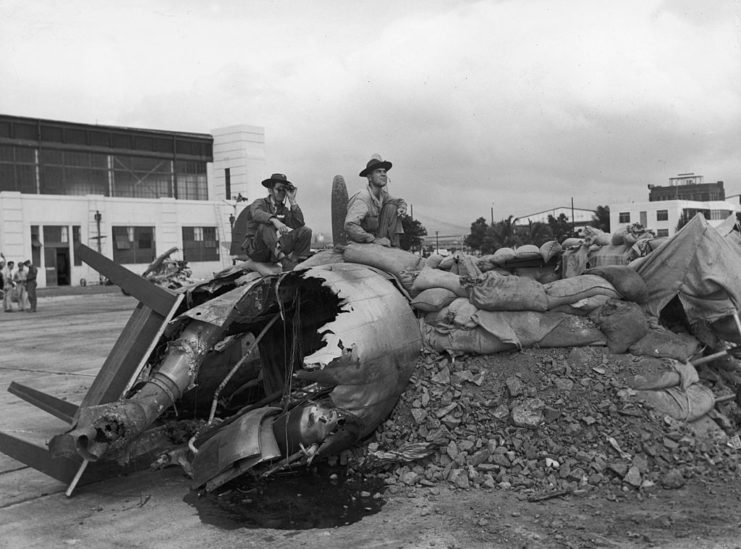
US military personnel sitting on the remains of one of the many aircraft that were destroyed during the attack on Pearl Harbor. Hickam Field was one of the first targets of the bombardment, to prevent a counterattack from the air.
Congress votes to declare war against Japan
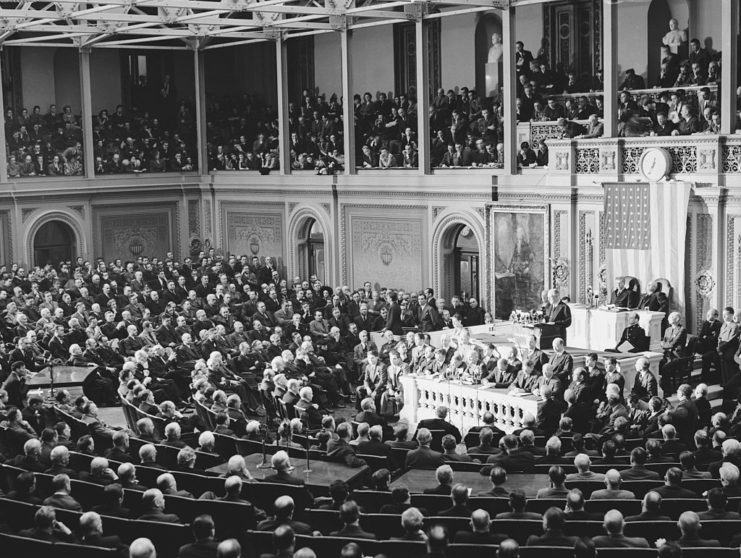
President Franklin D. Roosevelt addressing the US House of Representatives during a vote on whether to declare war against Japan following the attack on Pearl Harbor. The members of the House voted 388-1 in favor of going to war, while the Senate unanimously supported the declaration.
The USS Helena (CL-50) went on to serve in the Pacific Theater
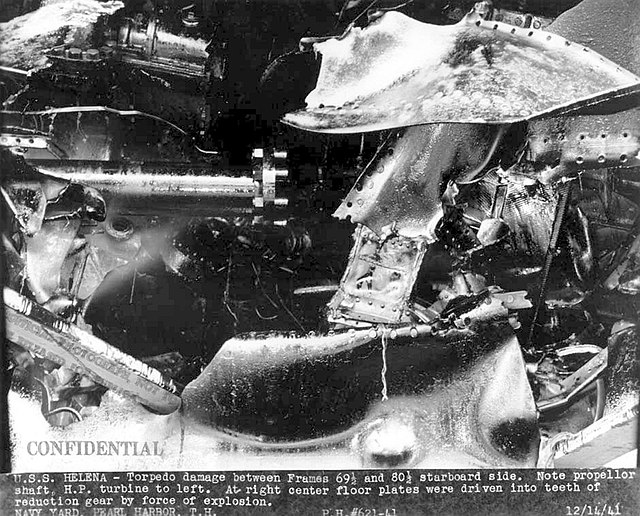
The USS Helena (CL-50), a Brooklyn-class light cruiser, suffered extensive damage during the attack. Struck by a torpedo, she underwent significant repairs, which allowed the vessel to return to service in early 1942. She subsequently participated in a number of engagements, including the Guadalcanal Campaign, before being sunk by the Japanese during the Battle of Kula Gulf on July 6, 1943.
Burying enemy combatants
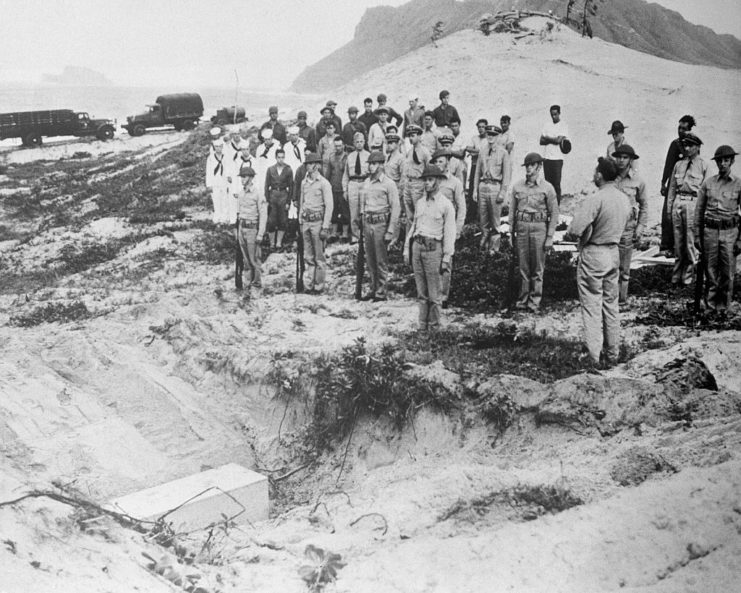
US military personnel standing before the grave of a Japanese pilot who was killed during the attack. As with American servicemen who lost their lives on Ford Island, the enemy combatant was buried on the beach at Pearl Harbor.
V-J Day marks the official Japanese surrender
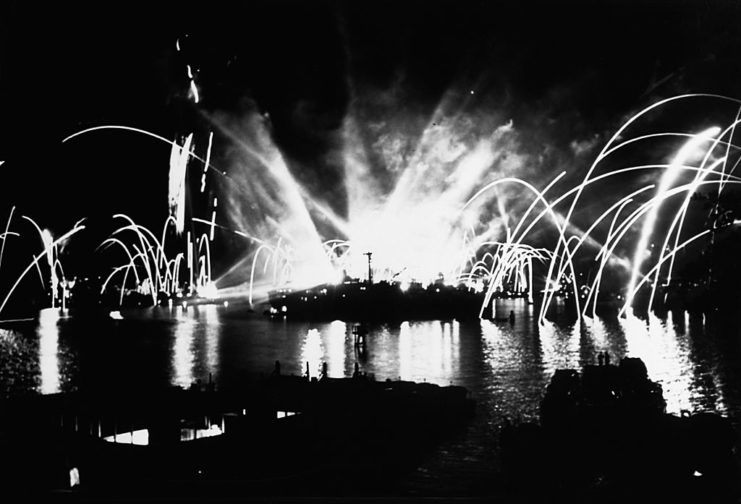
More from us: 22 Images That Show the Many Faces of World War II
Want War History Online‘s content sent directly to your inbox? Sign up for our newsletter here!
Celebrations at Pearl Harbor on V-J Day – August 15, 1945. The Japanese surrender marked the end of the Second World War, and celebrations continued for weeks after, with Americans happy the conflict was finally over.
